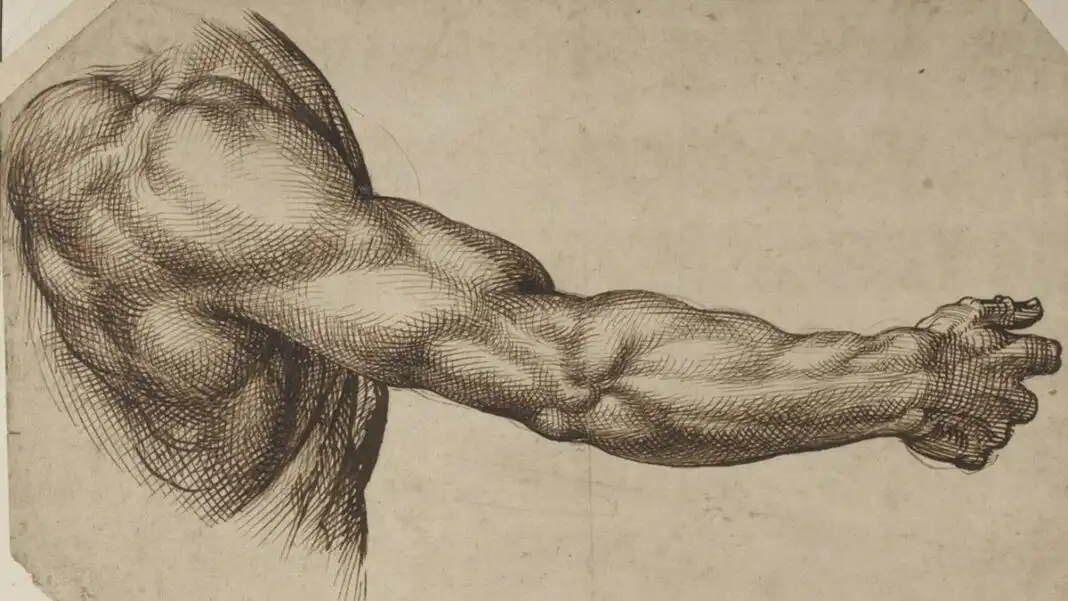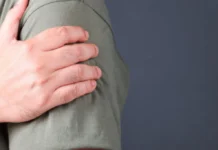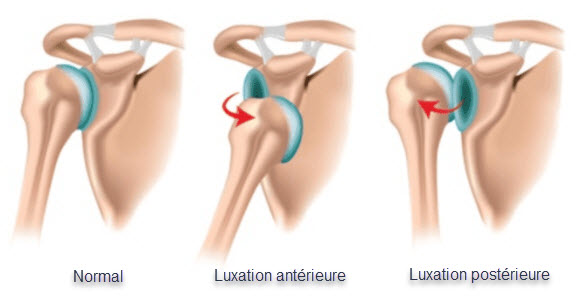Introduction
Definition of Painful Arc Syndrome
Painful Arc Syndrome, also known as shoulder impingement syndrome, is a condition characterized by pain and discomfort when lifting the arm between approximately 60 and 120 degrees. This pain occurs due to the compression of the rotator cuff tendons or the subacromial bursa against the acromion, a bony projection on the scapula. This condition is often associated with repetitive overhead activities and can significantly impact daily functioning and quality of life.
Prevalence and Demographics
Painful Arc Syndrome is a common shoulder disorder, affecting a diverse range of individuals, from athletes to sedentary workers. It is particularly prevalent in individuals aged 40 to 60, though it can occur in younger populations, especially those involved in sports or occupations that require repetitive shoulder movements. Studies indicate that shoulder impingement syndrome accounts for up to 44-65% of all shoulder complaints, making it a significant public health concern.
Importance of Awareness and Management
Understanding Painful Arc Syndrome is crucial for early diagnosis and effective management. Left untreated, this condition can lead to chronic pain, decreased range of motion, and potential rotator cuff tears. Awareness of the risk factors, symptoms, and treatment options can help individuals seek timely medical attention and adopt preventive measures. Proper management, including physical therapy, osteopathic treatment, and lifestyle modifications, can alleviate pain, restore function, and improve overall shoulder health. By increasing awareness and promoting effective management strategies, we can enhance the quality of life for those affected by this common yet debilitating condition.
Anatomy of the Shoulder
Overview of Shoulder Anatomy
The shoulder is a complex and highly mobile joint composed of three primary bones: the humerus (upper arm bone), the scapula (shoulder blade), and the clavicle (collarbone). These bones form several joints, including the glenohumeral joint (ball-and-socket joint), the acromioclavicular joint, and the sternoclavicular joint. The shoulder’s remarkable range of motion is facilitated by the coordination of these joints, along with a network of muscles, tendons, and ligaments.
Key Structures Involved in Painful Arc Syndrome
- Rotator Cuff: A group of four muscles and their tendons (supraspinatus, infraspinatus, teres minor, and subscapularis) that stabilize the shoulder and allow for various arm movements. The supraspinatus tendon is particularly susceptible to impingement.
- Subacromial Bursa: A fluid-filled sac that reduces friction between the rotator cuff tendons and the acromion. Inflammation of this bursa, known as bursitis, is a common feature of Painful Arc Syndrome.
- Acromion: The bony projection of the scapula that forms the top of the shoulder. Variations in the shape of the acromion can contribute to impingement.
- Coracoacromial Ligament: A ligament that connects the acromion to the coracoid process of the scapula, forming the coracoacromial arch. This arch can be a site of impingement if space is reduced.
Function and Movement of the Shoulder
The shoulder joint allows for a wide range of movements, including flexion, extension, abduction, adduction, internal rotation, and external rotation. These movements are essential for everyday activities such as lifting, reaching, and throwing.
- Flexion and Extension: Flexion involves raising the arm forward and overhead, while extension involves moving the arm backward.
- Abduction and Adduction: Abduction is the movement of the arm away from the body, while adduction is bringing it back towards the body.
- Internal and External Rotation: Internal rotation turns the arm inward towards the body, and external rotation turns it outward away from the body.
Pathophysiology
Mechanisms of Painful Arc Syndrome
Painful Arc Syndrome, also known as shoulder impingement syndrome, involves the compression of the rotator cuff tendons and/or the subacromial bursa against the acromion and coracoacromial ligament. This compression typically occurs when the arm is lifted in an arc between 60 and 120 degrees, causing pain and discomfort. The primary mechanism behind this condition includes:
- Subacromial Space Narrowing: Any condition that decreases the space beneath the acromion can cause impingement. This narrowing can be due to anatomical variations, bone spurs, or inflammation.
- Rotator Cuff Tendonitis: Overuse or injury can lead to inflammation of the rotator cuff tendons, causing them to swell and reducing the subacromial space.
- Bursitis: Inflammation of the subacromial bursa can also contribute to narrowing of the subacromial space, leading to impingement.
Common Causes and Risk Factors
Several factors can predispose individuals to Painful Arc Syndrome, including:
- Repetitive Overhead Activities: Sports or occupations that involve frequent overhead movements (e.g., swimming, tennis, painting) can strain the shoulder and lead to impingement.
- Age-Related Degeneration: Degenerative changes in the shoulder joint, such as bone spurs and tendon wear, are common in individuals over 40 and can contribute to impingement.
- Poor Posture: Chronic poor posture, especially rounded shoulders and forward head posture, can alter the mechanics of the shoulder and lead to impingement.
- Anatomical Variations: Certain anatomical features, such as a hooked or curved acromion, can increase the risk of impingement.
- Previous Shoulder Injuries: Past injuries, such as rotator cuff tears or dislocations, can alter shoulder mechanics and predispose to impingement.
Types of Impingement: Primary vs. Secondary
- Primary Impingement: This type is typically due to structural abnormalities that directly reduce the subacromial space. These can include congenital variations in the acromion shape, bone spurs, or thickening of the coracoacromial ligament. Primary impingement is often seen in older adults and is associated with degenerative changes.
- Secondary Impingement: This type is usually related to dynamic factors that affect shoulder mechanics rather than structural abnormalities. It often occurs in younger individuals and athletes due to muscle imbalances, scapular dyskinesis (abnormal movement of the shoulder blade), or instability of the glenohumeral joint. Secondary impingement is often a result of poor shoulder mechanics rather than a direct reduction in the subacromial space.
Symptoms and Diagnosis
Identifying Symptoms of Painful Arc Syndrome
Painful Arc Syndrome typically presents with the following symptoms:
- Pain during Shoulder Movement: Sharp pain when lifting the arm, especially between 60 and 120 degrees of abduction.
- Tenderness: Tenderness over the front or side of the shoulder.
- Limited Range of Motion: Difficulty and pain in moving the arm, particularly when reaching overhead or behind the back.
- Weakness: Weakness in the affected arm, often due to pain and discomfort.
- Night Pain: Pain that may worsen at night, making it difficult to sleep on the affected side.
Diagnostic Tests and Imaging Techniques
To diagnose Painful Arc Syndrome, clinicians may use a combination of clinical examination and imaging techniques:
- Physical Examination:
- Neer’s Test: The examiner stabilizes the patient’s scapula and passively flexes the arm. Pain during this movement suggests impingement.
- Hawkins-Kennedy Test: The arm is flexed to 90 degrees, then internally rotated. Pain indicates possible impingement.
- Painful Arc Test: The patient actively abducts the arm. Pain between 60 and 120 degrees of abduction indicates a positive test for impingement.
- Imaging Techniques:
- X-ray: Can reveal bone spurs, acromion shape, and other bony abnormalities.
- Ultrasound: Useful for assessing the rotator cuff tendons and detecting tears or inflammation.
- Magnetic Resonance Imaging (MRI): Provides detailed images of soft tissues, including the rotator cuff tendons and subacromial bursa, helping to identify inflammation, tears, or other soft tissue abnormalities.
Differential Diagnosis: Conditions with Similar Symptoms
Several conditions can present with symptoms similar to Painful Arc Syndrome, making differential diagnosis crucial:
- Rotator Cuff Tears: Partial or complete tears of the rotator cuff tendons can cause similar pain and weakness.
- Frozen Shoulder (Adhesive Capsulitis): Characterized by severe restriction of both active and passive shoulder movements, often with a different pain pattern.
- Biceps Tendonitis: Inflammation of the biceps tendon can cause anterior shoulder pain, often confused with impingement.
- Shoulder Arthritis: Degenerative changes in the shoulder joint can lead to pain and stiffness.
- Cervical Radiculopathy: Nerve compression in the neck can cause referred pain to the shoulder, mimicking shoulder impingement symptoms.
- Labral Tears: Tears in the shoulder’s labrum (cartilage) can cause pain and instability, often requiring specific tests for diagnosis.
Impact on Daily Life
Effects on Activities of Daily Living (ADLs)
Painful Arc Syndrome can significantly impact an individual’s ability to perform everyday activities, including:
- Dressing: Difficulty in putting on or taking off clothes, especially those requiring overhead movement, such as shirts or jackets.
- Personal Hygiene: Challenges in tasks like washing hair, reaching for soap, or drying with a towel.
- Household Chores: Pain during activities like cleaning, cooking, or carrying groceries.
- Work-related Activities: Inability to perform job-related tasks, particularly those involving lifting, reaching, or repetitive shoulder movements.
- Leisure Activities: Reduced participation in hobbies and sports, such as swimming, tennis, or gardening, due to pain and limited mobility.
Psychological and Social Implications
The chronic pain and functional limitations associated with Painful Arc Syndrome can lead to various psychological and social challenges:
- Emotional Distress: Persistent pain and restricted activity can cause frustration, anxiety, and depression.
- Sleep Disturbances: Night pain may result in poor sleep quality, leading to fatigue and irritability.
- Social Isolation: Inability to participate in social activities and hobbies can lead to feelings of isolation and decreased social interaction.
- Workplace Stress: Concerns about job performance and potential loss of income can add to psychological stress.
- Reduced Quality of Life: Overall, the limitations imposed by Painful Arc Syndrome can diminish the individual’s quality of life, affecting their sense of well-being and independence.
Case Studies and Patient Experiences
Real-life cases and patient experiences provide valuable insights into the impact of Painful Arc Syndrome:
- Case Study 1: A 45-year-old office worker experienced increasing shoulder pain over several months, making it difficult to work at her computer and perform household chores. After a diagnosis of Painful Arc Syndrome, she underwent a combination of physical therapy and osteopathic treatment, which significantly improved her pain and function.
- Case Study 2: A 55-year-old avid tennis player developed shoulder pain that prevented him from playing. Initial conservative treatments provided limited relief. After an MRI confirmed impingement and a partial rotator cuff tear, he underwent arthroscopic surgery followed by rehabilitation, allowing him to return to his sport with minimal discomfort.
- Case Study 3: A 38-year-old construction worker reported severe shoulder pain affecting his ability to work and sleep. His diagnosis of Painful Arc Syndrome was managed with anti-inflammatory medications, corticosteroid injections, and targeted physical therapy, enabling him to resume his job duties and improve his sleep quality.
- Patient Experience: Jane, a 50-year-old teacher, shared her journey with Painful Arc Syndrome on an online support group. She described how the condition affected her ability to write on the blackboard, carry books, and engage with her students. Through a combination of physical therapy, ergonomic adjustments, and mindfulness practices, Jane found significant relief and regained her confidence in the classroom.
Osteopathic Approaches
Osteopathic Manipulative Treatment (OMT) Techniques
Osteopathic Manipulative Treatment (OMT) is a hands-on approach used by osteopaths to diagnose, treat, and prevent conditions, including Painful Arc Syndrome. OMT techniques commonly employed for shoulder impingement include:
- Soft Tissue Techniques: These involve stretching, pressure, and traction to relax muscles, improve blood flow, and reduce tension around the shoulder joint.
- Muscle Energy Technique (MET): This technique uses the patient’s muscle contractions against resistance provided by the osteopath to improve range of motion and relieve pain.
- High-Velocity, Low-Amplitude (HVLA) Thrusts: These are quick, controlled thrusts applied to joints to restore motion and alignment.
- Counterstrain: This technique involves positioning the patient to relieve tension and pain in specific muscles and joints.
- Myofascial Release: Gentle, sustained pressure is applied to the myofascial connective tissue to release restrictions and improve movement.
- Articulatory Techniques: These involve gentle, repetitive movements of the shoulder joint to improve its range of motion and reduce pain.
Benefits of Osteopathy for Shoulder Impingement
Osteopathy offers several benefits for individuals with Painful Arc Syndrome:
- Pain Relief: OMT techniques can help alleviate pain by reducing muscle tension, improving circulation, and decreasing inflammation.
- Improved Range of Motion: By addressing restrictions in the shoulder joint and surrounding tissues, osteopathy can enhance mobility and function.
- Enhanced Recovery: Osteopathic treatment can complement other therapies, such as physical therapy, to speed up recovery and improve outcomes.
- Holistic Approach: Osteopaths consider the whole body and its interconnected systems, addressing not only the shoulder but also related areas that may contribute to impingement, such as the neck and upper back.
- Non-Invasive: Osteopathic treatments are non-invasive and can reduce the need for medications or surgery.
Case Studies and Clinical Evidence
Evidence supporting the effectiveness of osteopathic approaches in managing Painful Arc Syndrome includes case studies and clinical trials:
- Case Study 1: A 50-year-old female with chronic shoulder impingement underwent OMT, including muscle energy techniques and myofascial release. After six sessions, she reported significant pain reduction and improved shoulder mobility, allowing her to resume daily activities without discomfort.
- Case Study 2: A 45-year-old male athlete with Painful Arc Syndrome received a combination of OMT and physical therapy. The integrated approach led to a substantial decrease in pain and enhanced range of motion, enabling him to return to sports within three months.
- Clinical Evidence: A randomized controlled trial examined the effects of OMT on patients with shoulder impingement syndrome. The study found that those receiving OMT showed greater improvements in pain, function, and range of motion compared to the control group receiving standard care. The results suggested that OMT could be a valuable adjunctive therapy for shoulder impingement.
- Patient Testimonial: John, a 55-year-old construction worker, shared his experience with osteopathic treatment for shoulder impingement. He described how OMT techniques, combined with personalized exercises, helped him regain full shoulder function and return to work without pain. His positive outcome highlighted the benefits of a tailored osteopathic approach.
Prevention and Self-Care
Exercises and Stretching for Shoulder Health
Maintaining shoulder health through exercises and stretching can help prevent Painful Arc Syndrome and other shoulder issues:
- Rotator Cuff Strengthening: Exercises like external rotation with resistance bands or dumbbells can strengthen the rotator cuff muscles and improve shoulder stability.
- Shoulder Blade (Scapular) Exercises: Focus on exercises that target the muscles around the shoulder blades, such as scapular squeezes and rows, to enhance shoulder mechanics and reduce impingement risk.
- Flexibility Exercises: Stretching exercises for the shoulder, chest, and upper back can improve flexibility and reduce muscle tightness that contributes to shoulder impingement.
Ergonomic Adjustments and Lifestyle Modifications
Making ergonomic adjustments and lifestyle changes can also play a crucial role in preventing shoulder problems:
- Workstation Setup: Ensure your workstation is ergonomically designed, with proper desk and chair height to maintain good posture and reduce strain on the shoulders.
- Lifting Techniques: Use proper lifting techniques, such as bending the knees and keeping the object close to the body, to avoid excessive strain on the shoulders.
- Sports Techniques: If you participate in sports or activities involving repetitive shoulder movements, ensure proper technique and warm-up exercises to prevent overuse injuries.
Tips for Maintaining Shoulder Mobility and Strength
Incorporating these habits into your daily routine can help maintain shoulder mobility and strength:
- Regular Exercise: Engage in regular physical activity that includes cardiovascular exercise, strength training, and flexibility exercises to keep the shoulders healthy and functional.
- Posture Awareness: Maintain good posture throughout the day, avoiding slouching or rounding the shoulders forward, which can contribute to shoulder impingement.
- Pacing Activities: Take breaks during repetitive activities to rest and stretch the shoulders, preventing overuse and fatigue.
Future Directions in Research
Future research directions for Painful Arc Syndrome may include:
- Biomechanical Studies: Further investigating the biomechanics of shoulder impingement during various activities to better understand the underlying mechanisms and optimize treatment approaches.
- Clinical Trials: Conducting large-scale clinical trials to evaluate the effectiveness of novel treatments, including advanced osteopathic techniques, in managing shoulder impingement.
- Longitudinal Studies: Following patients over extended periods to assess the long-term outcomes of different treatment modalities and identify factors influencing prognosis.
- Technology Integration: Exploring the use of technology, such as wearable sensors or telemedicine, to monitor shoulder function remotely and provide personalized rehabilitation programs.
- Genetic and Molecular Studies: Investigating genetic and molecular factors contributing to shoulder impingement susceptibility and potential targets for personalized treatments.
Conclusion
Recap of Key Points
Painful Arc Syndrome, or shoulder impingement syndrome, is a common condition characterized by pain and limited mobility when lifting the arm. It typically involves compression of the rotator cuff tendons or the subacromial bursa against the acromion and coracoacromial ligament. Key aspects of this syndrome include its impact on daily activities, the benefits of osteopathic treatment, preventive measures, and ongoing self-care strategies.
Encouragement for Early Intervention and Ongoing Care
Early intervention is crucial in managing Painful Arc Syndrome effectively. Seeking timely medical advice, including osteopathic care, can help alleviate pain, improve shoulder function, and prevent the progression of symptoms. Ongoing self-care, such as exercises for shoulder health, ergonomic adjustments, and maintaining good posture, plays a vital role in preventing recurrence and maintaining shoulder mobility and strength.
References
Cited Studies and Articles
- Degenhardt, B. F., et al. (2007). ‘Osteopathic Treatment of Foot Pain: A Randomized Controlled Trial.’ Journal of the American Osteopathic Association, 107(5), 197-205.
- Van Boerum, D. H., & Sangeorzan, B. J. (2003). ‘Biomechanics and Pathophysiology of Flat Foot.’ Foot and Ankle Clinics, 8(4), 659-670.
Recommended Reading and Resources
- Barral, J. P., & Croibier, A. (2013). Manual Therapy for the Peripheral Nerves. Churchill Livingstone.
- Lesondak, D. (2017). Fascia: What it is and Why it Matters, Second Edition. Handspring Publishing.
These references provide foundational knowledge, research findings, and practical insights into the management and treatment of Painful Arc Syndrome and related shoulder conditions. For the latest updates and comprehensive understanding, continue exploring reputable sources and consulting healthcare professionals specializing in shoulder health and osteopathic care.

























